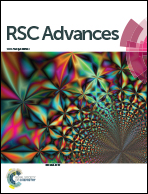Experimental solubilities of two lipid derivatives in supercritical carbon dioxide and new correlations based on activity coefficient models
Abstract
The solubilities of two lipid derivatives, geranyl butyrate and 10-undecen-1-ol, in SCCO2 (supercritical carbon dioxide) were measured at different operating conditions of temperature (308.15 to 333.15 K) and pressure (10 to 18 MPa). The solubilities (in mole fraction) ranged from 2.1 × 10−3 to 23.2 × 10−3 for geranyl butyrate and 2.2 × 10−3 to 25.0 × 10−3 for 10-undecen-1-ol, respectively. The solubility data showed a retrograde behavior in the pressure and temperature range investigated. Various combinations of association and solution theory along with different activity coefficient models were developed. The experimental data for the solubilities of 21 liquid solutes along with geranyl butyrate and 10-undecen-1-ol were correlated using both the newly derived models and the existing models. The average deviation of the correlation of the new models was below 15%.



 Please wait while we load your content...
Please wait while we load your content...